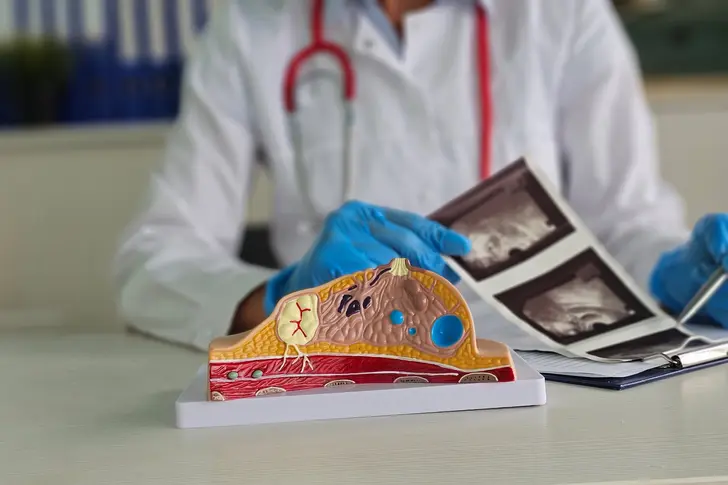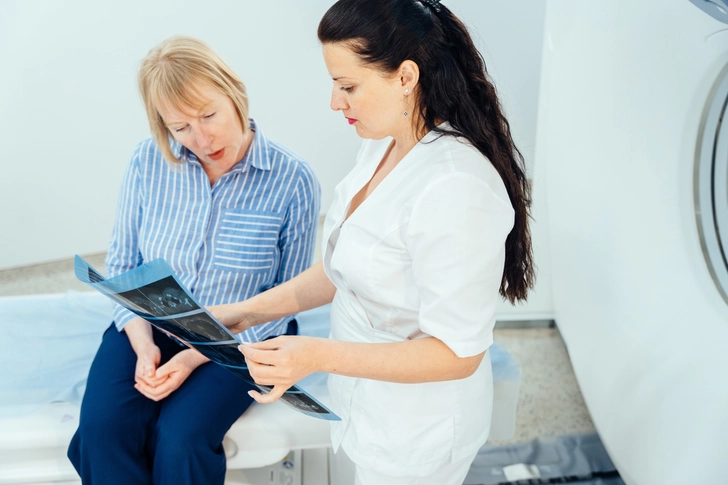- Overview
- Symptoms
- Risks, Prevention & Screening
- Tests & Diagnosis
- Types
- Your Breast Cancer Care Team
- Treatment
- Living With Breast Cancer
- Remission & Recurrence
- Advanced Breast Cancer
- Support & Resources
- Appointment Prep
- View Full Guide
Oncotype DX: What You Need to Know


Understanding the Oncotype DX Test
If you're diagnosed with breast cancer, your doctor might recommend the Oncotype DX test. Depending on the type of cancer you have, the test can tell doctors if the cancer is likely to come back at some point. It measures breast cancer genes. You might also hear it called a "21-gene signature."

Who Should Consider the Oncotype DX Test
The test is most appropriate if you have early-stage (stage I or II) breast cancer that is estrogen-receptor positive and HER2 negative. It's also used for those with no cancer in their lymph nodes. The test results can help determine if you might benefit from chemotherapy in addition to hormone therapy. You may also have the test if you have ductal carcinoma in situ (DCIS). It can help you and your doctor decide on radiation treatments.

How the Test Works
The Oncotype DX test looks at a sample of your tumor tissue, usually from a previous biopsy or surgery. It analyzes the activity of 21 genes that can influence cancer growth and spread. Based on these gene activities, the test calculates a score from 0 to 100. A higher score means a higher risk that the cancer might come back.

Interpreting Your Results
If you are over 50 years old, your score falls into one of three categories: low (0-25), intermediate (26-30), or high (31-100). A low score suggests hormone therapy alone may be sufficient, while a high score indicates potential benefit from chemotherapy. If you are under 50, a score of 15 or less means you probably would only be treated with hormone therapy. If your score is between 16-20, the benefits of chemo may outweigh the risks of side effects. Between 20 and 25, the benefits of chemo may outweigh the side effects. With a score between 26 and 100, both hormone therapy and chemo will likely be recommended.

The Oncotype DX test offers several benefits. It can help avoid unnecessary chemotherapy for those unlikely to benefit from it, sparing them from potential side effects. For others, it can confirm the need for chemotherapy. The test provides personalized information about your specific cancer, allowing for more tailored treatment.

Limitations and Considerations
While valuable, the Oncotype DX test has limitations. It's not suitable for all types of breast cancer, particularly HER2-positive or triple-negative cancers. The test is also quite expensive, though often covered by insurance. Results can sometimes fall in the intermediate range, which may not provide clear guidance. It's important to discuss these factors with your doctor. Keep in mind that the test is a tool to aid decision-making, not a definitive answer for everyone.

Preparing for the Test
If you and your doctor decide to use the Oncotype DX test, no special preparation is needed on your part. The test uses tissue from your initial biopsy or surgery, so no additional procedures are required. However, you can prepare by writing down any questions you have about the test, its results, and how they might affect your treatment plan. It's normal to feel nervous about test results, so consider discussing your feelings with your health care team or a support group.

After the Oncotype DX Test
Plan to talk with your oncologist after receiving your Oncotype DX results. Come prepared with questions about your score and its implications for your treatment. Your doctor will consider the test results along with other factors like your overall health, cancer stage, and personal preferences. Together, you can make an informed decision about your treatment plan, whether it involves hormone therapy alone or in combination with chemotherapy.
PHOTO CREDITS:
Slide 1 - NMK-Studio / Shutterstock
Slide 2 - HenadziPechan / Shutterstock
Slide 3 - Gumpanat / Shutterstock
Slide 4 - Yuriy K / Shutterstock
Slide 5 - Iryna Inshyna / Shutterstock
Slide 6 - Saiful52 / Shutterstock
Slide 7 - Ground Picture / Shutterstock
Slide 8 - SeventyFour / Shutterstock
SOURCES:
American Cancer Society: "How Is Breast Cancer Diagnosed?"
Breastcancer.org: "Oncotype DX Test."
National Cancer Institute: "Tumor Markers."
MedlinePlus: “Tamoxifen.”